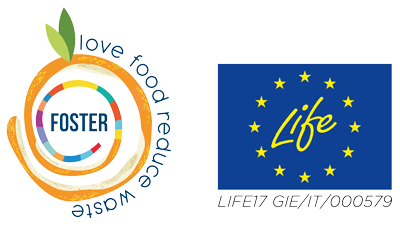The importance of the chef
“For humanity, the two most universal languages are music and cuisine”, said one of the world’s most inventive and most creative chefs, Ferran Adrià.[1]
With cuisine having such a prominent role worldwide, the chefs carry massive importance in the food industry and beyond. Over the last several decades, their impact grew from being unknown cooks working behind the curtains to famous artists, educators, entrepreneurs, social activists, and so much more. Not only that their vision and guidance are making or breaking the restaurant business, but also they dictate eating and cooking trends throughout the globe.
A positive example of how chefs use their influential role in combating important issues is well-known Jamie Oliver. He has relentlessly worked on addressing child obesity within schools and cafeterias.[2] Jamie has recognized that raising children’s awareness from an early age can significantly impact their choices to eat whole foods produced locally.
What is more, with such an authoritative voice, chefs are the ones who have enough knowledge and capability to influence the amount of food being used and wasted in their kitchen.
Tackling food waste from the chef’s perspective
Tackling the food waste by using almost binned food means that such food has to be appealing and tasty so that the customers want to eat it again and again. For this reason, the chef’s artistic, innovative, and even scientific abilities hold a unique value in their professional work. These traits go hand-in-hand with the activism around food waste. The goal is to make food look appealing as well as taste good. This way, people will come back for more and the trend of using the food debris will continue to grow.
Valuable examples of positive food waste trends
Fortunately, more and more chefs are becoming aware of the food waste problem, and many of them feel called to make a change regarding this crucial issue. For example, Dan Barber, executive chef at the Bluehill Restaurant in Manhattan and Stone Barns in New York, uses food scraps for his recipes even in first-class restaurants.[3] Some of the most famous meals he prepared for his pop-up restaurant initiative called WastED were “fried skate-wing cartilage” and “carrot top marmalade”.[4]
Similarly, Massimo Bottura, an Italian chef, developed his Refettorio initiative and fed the homeless with nourishing and warm meals cooked with the food that was meant to be discarded.
Then again, we have a precious example of Tim Ma’s philosophy, which explains clearly that tackling food waste doesn’t only do good for the environment. It also saves a lot of money and increases the restaurant’s profit. Tim Ma has a very powerful role in reducing food waste. His creative recipes came out both from the very rational approach towards his business as well as the “minimum-waste-mindset”. For example, the carrots are used to their maximum; the tops of the carrot are blended with garlic and few other ingredients to make a unique pesto, and the peel of the carrot is fried and served as a garnish. His specialty is Crème Fraiche chicken wings, initially prepared from the leftover chicken wings for his restaurant staff. Eventually, it became very famous, so he decided to include it in the menu for the guests.[5]
Educating other chefs
Another essential role of the chef is educating other chefs and assistants and organizing back-of-house training to learn more about the sustainability of cooking and eating. In that regard, Dan Barber has been teaching his colleagues about utilizing food scraps. This knowledge of what parts of vegetables, flowers and seeds are edible has been neglected in today’s massive food production systems.[6]
Chefs Manifesto
Chefs Manifesto is a worthwhile initiative that unites more than 700 chefs intending to improve the future of the food. It is also one of the ways to achieve the Sustainable Development Goal (SDG) 2, managed by Paul Newnham. The initiative introduced eight practical steps that directly invite people to make the change in their household and community. Some of them include supporting the local and seasonal food, education about healthy diets, the importance of plant-based foods and the value of reducing food waste.[7]
One of the chefs within the Manifesto network is Justin Horne, a British chef dedicated to sustainable cooking and food waste decrease. Justin gave some examples of how he likes to use still good food waste that would otherwise be thrown away. He advises that we don’t throw the apple peel. Instead, we put them in white wine vinegar and get a fantastic flavored condiment. Also, the old bread or pastry can be reused to make a comforting bread and butter pudding. Another interesting trick is to blend the onion and garlic skin with salt. This way, we get a more exciting version of the regular salt.[8]
Zero Waste cooking
Along with the food waste activism, there are zero-waste practices that many chefs welcome into their kitchens. However, the introductory process is not simple and requires well-encompassing training, education, communication, as well as cooperation among the staff. On top of that, for this process to be successful, the chefs must have a strong passion for reducing food waste and following zero-waste cooking. The easiest and most frequent techniques chefs use are repurposing ingredients, composting, donating, training for the staff, and controlling the portion sizes.[9]
Conclusion
As the world develops economically and technologically, the demand for food increases, which, at the same time, creates even more space for positive changes within the food chain. Thus, knowledgeable, innovative and experienced chefs hold a powerful role that can bring about change in many aspects regarding the future of the food. By using the good sides of technological development and focusing on sustainability, food waste reduction and zero-waste practices in the kitchen, chefs are at the forefront of a revolutionary change that, hopefully, will spread throughout the globe. So far, there have been numerous positive initiatives that created a butterfly effect within the food waste movement. Using food scraps to create 5-star dishes, feeding the homeless with warm meals using leftover food, and being creative at home using yesterday’s extra lunch food – are all small but vital impacts that should continue creating a loud echo of how to start treating our planet with more respect and humbleness.
[1] https://www.youtube.com/watch?v=Qglfsp_pfF8, 5 January 2022
[2] https://fnbreport.ph/3163/the-evolving-roles-of-chefs/, 5 January 2022
[3] https://www.theguardian.com/environment/world-on-a-plate/2015/oct/30/a-chefs-manifesto-lets-tackle-food-waste-with-good-fare, 5 January 2022
[4] https://www.nytimes.com/2015/04/01/dining/at-the-chef-dan-barbers-pop-up-wasted-bruised-and-misshapen-bits-are-dinner.html, 5 January 2022
[5] https://www.npr.org/sections/thesalt/2018/04/20/601975226/for-one-fine-dining-chef-cutting-food-waste-saves-the-planet-and-the-bottom-line, 5 January 2022
[6] https://www.sodexo.com/inspired-thinking/chef-climate-change.html, 5 January 2022
[7] https://knowledge.unccd.int/knowledge-products-and-pillars/unccd-science-policy-weblog/chefs-advocating-change-our-food-systems, 5 January 2022
[8] https://www.instagram.com/justinhornechef/
[9] https://scholarworks.uark.edu/cgi/viewcontent.cgi?article=5194&context=etd, 5 January 2022


